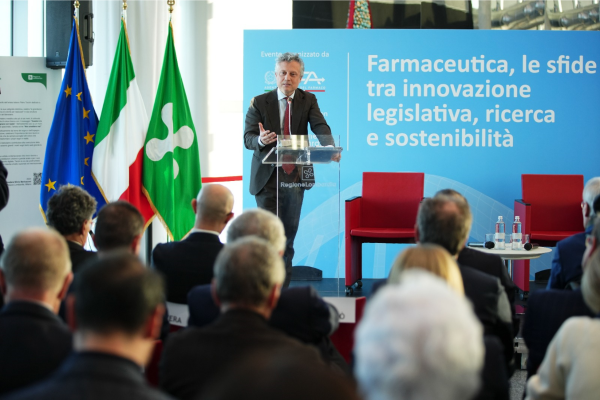.png) Agenzia Italiana del Farmaco
Agenzia Italiana del Farmaco
Scientific Seminar on medicines regulation beyond product licensing
A good metaphor for drug development and use with respect to licensing is the course of a river, distinguishing between what happens upstream (e.g. basic science, discoveries, R&D, clinical development, manufacturing) and downstream (e.g. drug use, clinical guidelines, HTA/reimbursement, pharmacovigilance).
AIFA Director General Nicola Magrini and Patrizia Popoli (ISS - CTS AIFA) discuss with Bert Leufkens, Emeritus Professor of Regulatory Sciences at the University of Utrecht - The Netherlands, on the challenges of the regulatory system beyond the authorisation of medicines.
Video
Pubblicato il: 19 May 2021
Abstract
Regulatory systems have basically three objects: ensure patient safety, enhance public health, stimulate Innovation.
Directive 2001/83/EC and Regulation (EC) No. 726/2004 are the foundation of many procedures, actions, interventions of the regulatory system in Europe and they highlight the Marketing Authorisation.
The authorisation of medicines builds on three criteria, namely quality, safety and efficacy.
The flow of a river could be used as a metaphor for drug development and use, distinguishing between what is happening upstream (e.g. basic science, discovery, R&D, clinical development, manufacturing) and downstream (drug use, clinical guidelines, HTA/reimbursement, pharmacovigilance) of the authorisation.
It can be stated that drug development and use over time is a mixture of upstream and downstream regulatory interventions. However, many activities are not directly related to the marketing authorisation, both upstream and downstream; as for upstream activities, there is a high level of convergence (Scientific advice, protocol assistance, Scientific guidelines, GCP oversight of registration trials, etc.), while downstream activities show a low level of convergence (Appropriate use/clinical guidelines, HTA/payer interactions, Management of drug shortages, etc.).
Moreover, some upstream regulatory interventions have a downstream impact. For instance:
- Use of biosimilars is differently accepted by prescribers and patients;
- Conditional approval creates uneasiness with HTA bodies and payers.
An increasing convergence in upstream regulatory policies has contributed to a better standard setting by the authorithies and to worksharing regulatory review by the European network (EMA+NCAs) and through the international collaboration (ICH, WHO, ICDRA, ICMRA). An example was agreeing upon the requirements for the new Covid-19 vaccines.
On the other side, a lack of convergence can be seen in downstream policies and decision-making, e.g.:
- Differences in HTA and payer decisions across Europe;
- Clinical guidelines do not always follow the SmPC;
- Different management of safety issues at national vs European level;
- Management of drug shortages;
- National Covid-19 vaccine strategies differ between countries and with EMA’s positions.
That being said, a lesson learned during the last decades is that regulation is too important to leave it to regulators. For sure, regulators made many steps forward over the last decades. Future directions for regulatory innovation include:
- Standard use of rolling review, better crisis management, higher efficiency, etc.
- Upstream involvement brings many advantages, however, attention should be paid to regulatory capture;
- More downstream involvement puts the European system at risk, in that national interests may prevail;
- More investments in regulatory science are needed.
Bibliography
- Ebbers HC, Pieters T, Leufkens HG et al. Effective pharmaceutical regulation needs alignment with doctors. Drug Discov Today. 2012 Feb; 17(3-4): 100-3. DOI: 10.1016/j.drudis.2011.09.018
- Vreman RA, Bouvy JC, Bloem LT et al. Weighing of Evidence by Health Technology Assessment Bodies: Retrospective Study of Reimbursement Recommendations for Conditionally Approved Drugs. Clin Pharmacol Ther. 2019 Mar;105(3):684-691. doi: 10.1002/cpt.1251. Epub 2018 Nov 8
- Leufkens HG. Regulatory science: Regulation is too important to leave it to the regulators. Br J Clin Pharmacol. 2020 Dec;86(12):2333-2334. doi: 10.1111/bcp.13917. Epub 2019 Apr 10
- Vreman R, Naci H, Goettsch WG et al. Decision Making Under Uncertainty: Comparing Regulatory and Health Technology Assessment Reviews of Medicines in the United States and Europe Clin Pharmacol Ther 2020; 108: 350-357







